Ballet Grand Battement – How to Perfect Your Technique
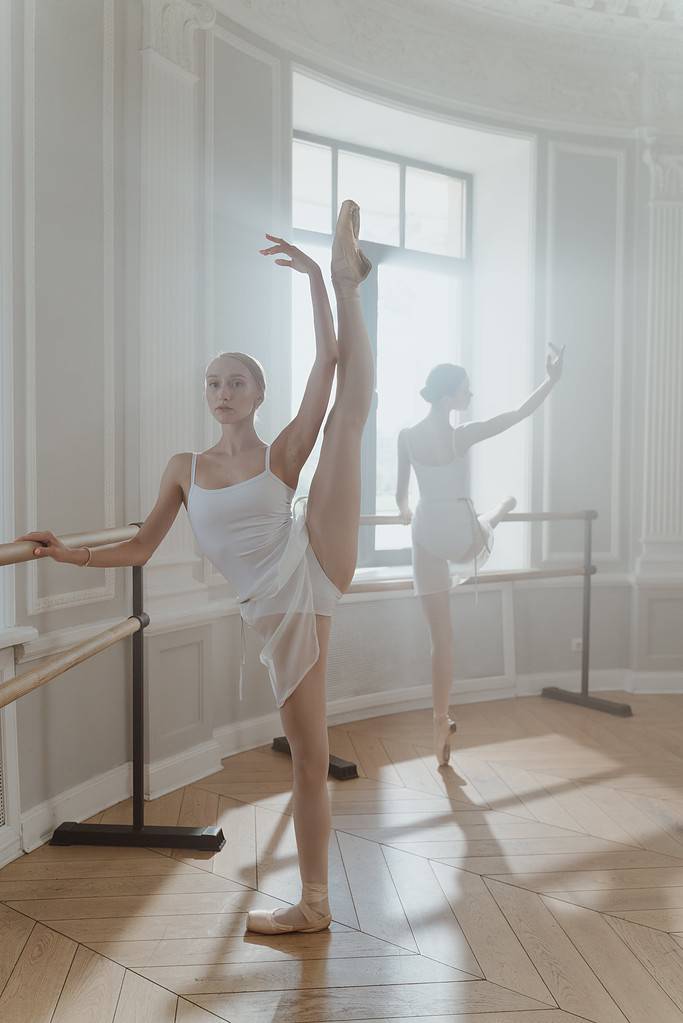
One of the fundamental movements in ballet is the grand battement.
Occasionally, the thrill of performing exciting steps can overshadow the importance of mastering basic ballet techniques.
The grand battement is the foundation for executing grand allegro, providing you with the sensation, freedom, and necessary control to properly execute such a dynamic movement.
In this blog post, I’ll provide you with beginner and professional tips to master your ballet grand battement technique.
WHAT IS A BALLET GRAND BATTEMENT?
A Ballet Grand Battement is a dynamic movement that involves the sensation of throwing or kicking the leg.
It demands precise control to uphold proper body alignment and position.
Effectively,
It’s usually the last combination at the barre, and is vital preparation for grand allegro, and ballet steps like grand jete or entrelace.
This movement can be performed in devant, derriere, and a la seconde, in a variety of open or closed positions.
Additionally, it can be performed en cloche, where the leg is brushed through 1st position from front to back.
COMMON BALLET GRAND BATTEMENT MISTAKES
Here are three common ballet grand battement mistakes that can be easily avoided with practice and precision.
NOT USING THE FLOOR
The first common mistake during a ballet grand battement is neglecting to utilise the floor.
Dancers often initiate the movement by first lifting the hip, and then lifting the working leg from the thigh, instead of pressing the foot down and into the floor.
LIFTING THE THIGH RATHER THAN THE INNER THIGHS
The second common mistake is lifting the thigh rather than engaging the inner thigh muscles to lift the leg.
Try and approach the movement with the understanding that it originates from the inner thigh.
This ensures that the working leg remains fully rotated and has more freedom for achieving increased height and an elongated line.
CONTROLLING THE MOVEMENT RATHER THAN THROWING THE LEG
The third common mistake can be counterproductive for grand battements.
Although control is essential, dancers must discover a sense of freedom in their hip sockets to effectively propel the leg into the air.
Excessive control may hinder the freedom necessary to generate the dynamics required for grand allegro later on.
A good way to think of this is, freedom not tension!
BALLET GRAND BATTEMENT TIPS FOR BEGINNER DANCERS
Here are three tips for beginner dancers that can be incorporated into your daily practice to achieve a correct ballet grand battement technique.
TIP 1 – PRACTISE WITH A FLEXED FOOT
Did you say flexed foot?
Yes. This might seem strange but practising with a flexed foot can help you discover the engagement of the inner thighs more easily.
RECOMMENDATION
Next time you’re at the barre, experiment with grand battements using a fully flexed foot.
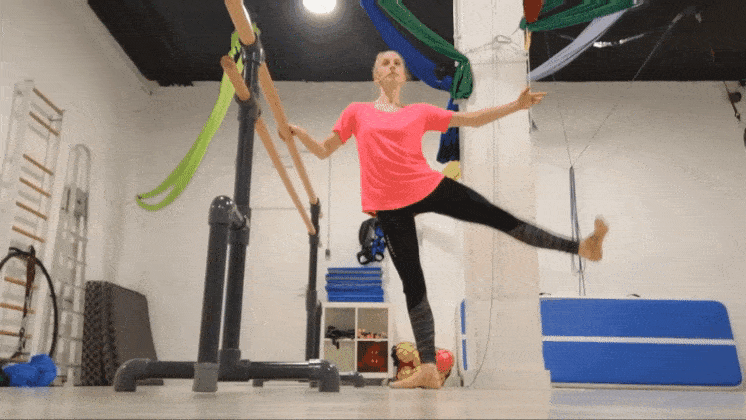
Press the heel into the floor as you throw the leg up, envisioning the heel being pushed upward.
On the way down, focus on creating length in your inner thighs, fully stretching the leg, and rotating the foot outward.
This technique will avoid that constricted feeling in the thighs, and achieve maximum height in a grand battement.
TIP 2 – IMPROVE FLEXIBILITY
While every dancer has their limit of flexibility, improving your flexibility can ultimately increase the range of motion.
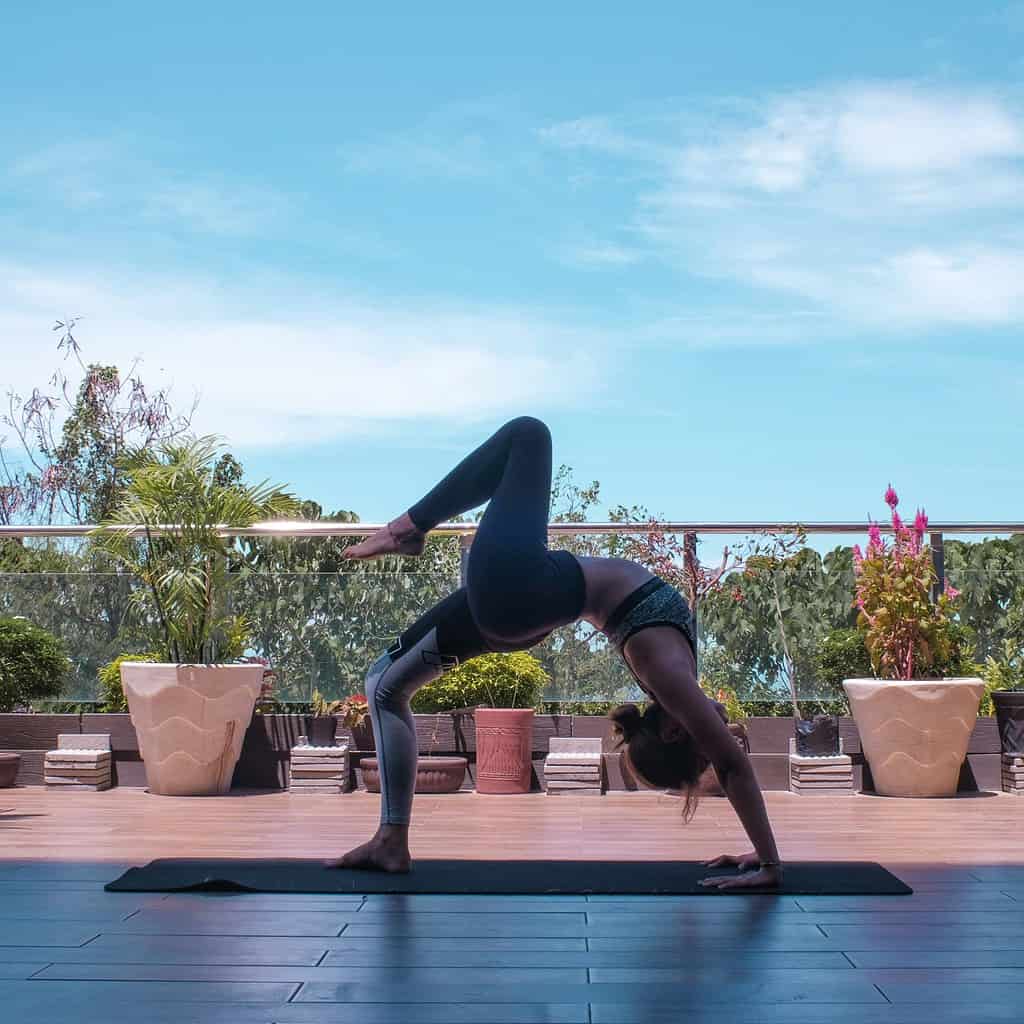
This will help to achieve a high grand battement extension.
RECOMMENDATION
Integrate a mix of static and dynamic stretching into your conditioning routine.
Note: Make sure that your adequately warmed up before any stretching session.
Focus on enhancing the flexibility of your hamstrings, as tightness in this area can restrict your range of motion.
Additionally, work on the flexibility of your back (ie. crucial for achieving a high arabesque).
TIP 3 – PUSH DOWN INTO THE STANDING LEG
While grand battements can be a challenging step, dancers can make it more manageable by pushing down into the standing leg.
Allowing the standing leg to fully support your body gives the working leg greater freedom of movement.
This tip will avoid dipping or sinking on one side.
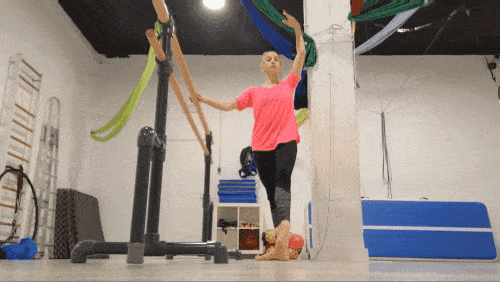
Pretty important when you don’t have a barre to hold.
RECOMMENDATION
Imagine that the standing leg is pushing down onto the floor as the working leg is brushed and lifted into the air.
Avoid swinging off your supporting leg and distorting your hips.
When closing a grand battement, the same principle applies when you are closing from a ballet tendu.
The leg should be lowered with control, maintaining a lifted feeling and closing the foot into a nice tight position.
BALLET GRAND BATTEMENT TIPS FOR ADVANCED DANCERS
Here are three tips for advanced dancers, that build on the basic principles of a ballet grand battement, that can be incorporated into your daily practise to perfect this movement further.
TIP 1 – MAKE SPACE FOR THE BACK
Making space for the back should help you avoid pinching and back-related injuries.
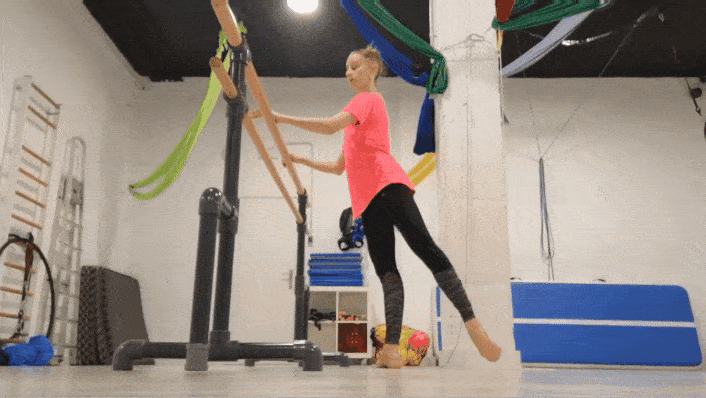
It will also give your grand battement derriere a beautiful and elongated arabesque position.
RECOMMENDATION
When performing a grand battement to the back, lift out of your hips and slightly bring your chest forward, keeping your shoulders square.
Remember, don’t lower your body too much.
Only a small adjustment is required to create that essential extra space.
TIP 2 – FINISH WITH THE TOES
There’s nothing worse than seeing a beautiful grand battement with a floppy relaxed foot at the end.
The line is destroyed!
A relaxed foot means that the entire leg muscles have not been fully engaged.
RECOMMENDATION
Focus on fully stretching the leg all the way down to the toes.
By brushing the floor and using the intrinsic muscles of the foot, right from the beginning tendu position, the finished product will be complete.
TIP 3 – FIND FREEDOM
Once you have a solid understanding of the grand battement, the next step is to explore additional freedom in the range of movement.

There is always room for improvement, not only in terms of the height of the extension but also in the ability to move with a sense of ease in both the upper and lower body.
RECOMMENDATION
Practise grand battements in a variety of positions and experiment with how they feel when executed with an en cloche swimming movement.
Can you feel the freedom in your hip socket when the leg moves freely without overly tensing the muscles?
Strive to find a balance between control and stability in the lower body while embracing freedom and fluidity in your port de bras.
WRAP UP
Mastering grand battements, like any ballet step, demands patience, practice, and a significant amount of repetition until the movement become second nature.
Once you have a firm grasp of a grand battement, everything learned at the barre can seamlessly be incorporated into the centre and applied to grand allegro.
The dynamic throw of the leg and controlled closing during a grand battement serve as both the impulse, preparation, and landing for executing beautiful grand jetes and more.
Try the tips out and see for yourself.






